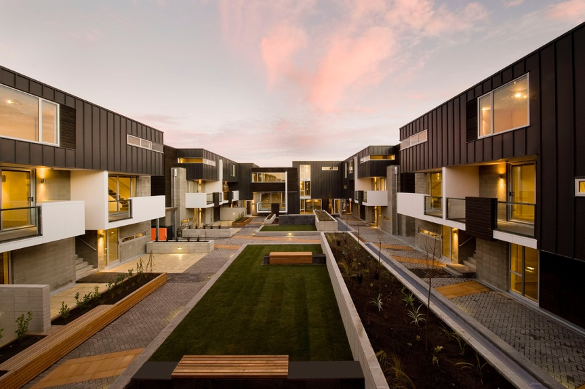Residential architecture is changing fast, with architects using new ideas and technology to create homes that are both practical and beautiful. Modern homeowners want spaces that are smart, flexible, and eco-friendly, and Residential Architects are stepping up to meet these needs. Here’s a look at some of the key ways architects are innovating to design the homes of tomorrow.
- Smart Home Technology
Smart homes are becoming a standard part of modern design. Architects are building homes that include systems for lighting, security, heating, and more that can be controlled through voice commands or mobile apps. By planning layouts that work well with smart devices, architects make homes more comfortable, convenient, and energy-efficient.
- Eco-Friendly and Sustainable Designs
Sustainability is a priority for many homeowners, and architects are focusing on eco-friendly designs. By using materials like recycled wood, solar panels, and energy-saving windows, they help reduce a home’s impact on the environment. Features like solar panels and natural insulation make homes greener and help owners save on energy costs.
- Flexible Spaces for Modern Living
Modern life is always changing, and today’s homes need to be flexible. Architects are creating rooms that can serve more than one purpose, like a guest room that can double as an office or a family room that can transform into a workout space. Movable walls and modular furniture help create rooms that adjust to a family’s needs over time.
- Biophilic Design: Bringing Nature Inside
Biophilic design, or adding natural elements to interiors, is becoming more popular. Architects are using natural materials like wood, stone, and indoor plants to create a calm, inviting atmosphere. Big windows, indoor gardens, and green walls connect homeowners with nature, helping to improve their mood and well-being.
- Open Layouts with Defined Zones
Open-concept layouts remain popular, but architects are now adding ways to create different zones within open spaces. By using partial walls, changes in floor levels, or unique materials, they separate areas without blocking flow. This approach keeps spaces open while making it easier to organize different activities.
- Maximizing Natural Light and Ventilation
Good lighting and fresh air make homes feel more comfortable. Architects are focusing on smart window placement, skylights, and solar tubes to bring in as much natural light as possible. This reduces the need for artificial lighting, saves energy, and makes homes healthier places to live.
- Simple, Functional Design
Minimalism is very popular in modern homes. Architects use clean lines, neutral colors, and smart storage to keep spaces simple and clutter-free. Built-in cabinets, hidden storage, and sleek furniture help create homes that are stylish, functional, and easy to keep organized.
- 3D Printing and Prefabrication
3D printing and prefabricated parts are changing construction. Some architects are even designing entire homes or sections of homes that can be printed or built off-site and then quickly assembled. This cuts down on construction time, reduces waste, and allows architects to try new shapes and layouts that might be difficult to build by hand.
- Privacy Solutions for Modern Homes
As homes become more open and feature large windows, privacy remains a concern. Architects are using smart solutions like frosted glass, plants, and sliding screens to give homeowners privacy without blocking light or air. These design elements make homes feel private and open at the same time.
Looking Forward
Modern architects are using creativity and new technology to build homes that are smart, sustainable, and adaptable. From flexible rooms and eco-friendly materials to smart tech and biophilic design, they’re creating homes that suit today’s lifestyles and help protect the planet. As technology advances, we can expect even more exciting innovations to make homes that are comfortable, efficient, and ready for the future.
Book a consultation with Sumer Innovations to explore how these cutting-edge trends can transform your home.





